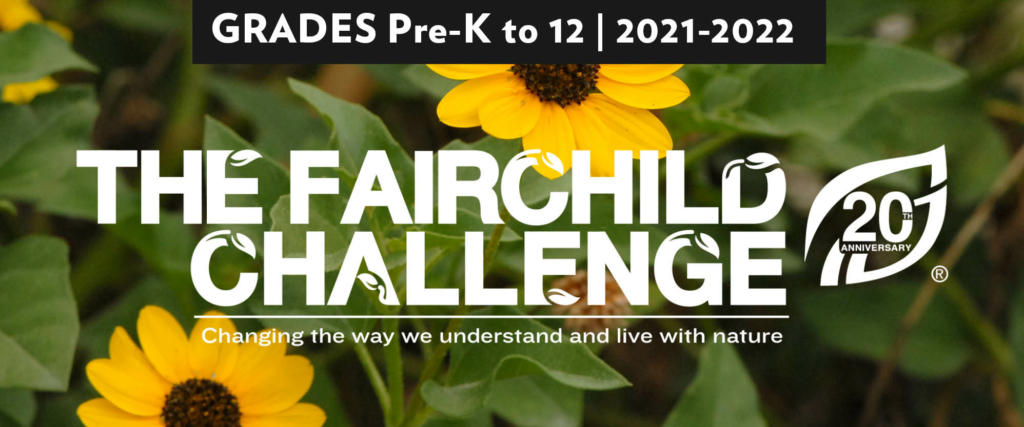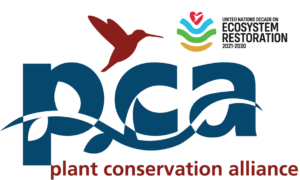WHAT IS THE FAIRCHILD CHALLENGE?
The Fairchild Challenge is an award-winning, interdisciplinary, environmental science competition, run by Fairchild Tropical Botanic Garden. The challenges are designed to engage students of diverse interests, abilities, talents and backgrounds to explore the natural world. For 2021-2022, Fairchild and The Plant Conservation Alliance are collaborating on a national challenge about iconic native plants of the United States and its territories.
NATIONAL CHALLENGE: COMMEMORATIVE COIN – AMERICAN ICONS
As the Plant Conservation Alliance celebrates 25 years of advancing plant conservation and promoting native plant community restoration, they need your help to design a commemorative coin that honors iconic plants native to the United States. Plants play an important role in our nation’s ecosystems while also being symbols of local cultural heritage, defining the character of places, and influencing our experiences with the natural world where we live, work, and play.
THE CHALLENGE:
This challenge is a unique opportunity for our national participants to identify a U.S. native plant that symbolizes the uniqueness of America’s landscapes and create an illustration for a coin that showcases your plant. Drawings must include a written description explaining why you selected this plant and how it is representative of the region’s cultural and natural heritage. Downloadable PDF
WHO CAN ENTER?
The challenge is aimed at school age learners in grades PreK-12 and can be completed as an individual or as a group (up to 5 people).
Entries must be submitted by a teacher associated with a private, public or homeschool or a supervising adult.
Entries will be judged by Plant Conservation Alliance collaborators, who share a common interest in sustaining and restoring our native plant communities.
WHAT WILL HAPPEN TO THE ENTRIES?
Once the deadline has closed, we will review the entries, and the winners will be shared via our website and social media.
INSTRUCTIONS:
- Have a discussion with your class, family, and/or friends about this challenge. What role do plants play in our nation’s ecosystems? How are plants symbols of local cultural heritage and how do they define the character of places?
- Select a native plant from the United States or its Territories (see map) and research it – you may find information in books, from the internet, from your local botanic garden, through a university botanic department, etc.
- Download the challenge coin design template
- Design an illustration of your chosen plant & write your 1 page description (see entry requirements)
- Electronically submit the National Challenge Entry Form
- Uploaded PDF file to entry form includes:
- Challenge coin design (Template)
- Description
- Bibliography
ENTRY REQUIREMENTS:
To enter you must complete the form provided above and attach your designed commemorative coin and written description and bibliography. The saved single PDF file name must be titled “School Name_Student Name_National Challenge”. Your entry must meet the following requirements:
- Entry accurately depicts a regionally iconic plant native to the United States or its Territories
- One-page written description includes: 1) scientific and common name of plant; 2) personal reflection on chosen plant; & 3) importance in region’s (see map) natural (include plant community, ecosystem) and cultural heritage
- Artwork must be an original hand-rendered (2-D flat) design created by the student
- Entry should be drawn within a circle on an 8.5 x 11 sheet of paper (see template). Entry may be in black and white or color: in ink, pen, pencil, fine-point marker or paint. Simple lines are best and avoid color gradients
- Bibliography must be submitted citing at least 3 sources, following MLA or APA format
ENTRY SUBMISSION:
December 15, 2021
EVALUATION CRITERIA:
For more information on how your submission will be evaluated, see National Challenge Evaluation Sheet
NATIONAL ACADEMIC STANDARDS:
This Challenge meets various national standards, visit National Challenge Benchmarks:
CHALLENGE RESOURCES:
- Project Video – Dr. Patricia D., Botanist at US Fish & Wildlife Service – Division of Scientific Authority
- U.S. Regions Map (See entry requirements)
Background information:
Additional Resources to assist student/teacher participation with the American Icon Challenge
- National Wildlife Federation Native Plants page has information on native plant types, common native plants by ecoregion, and keystone plant species by ecoregion. You can also use their native plant finder to search on native plants by zip code.
- Biota of North America Program’s North American Plant Atlas has species distribution maps, including one where you can select a state and then it lists all the plant genera found in that state.
- US Forest Service Wildflower page has information on pollinators, rare plants, ethnobotany, and wildflowers in general.
- USDA PLANTS database provides information on whether species is native or not, on the state-level.
- Bureau of Land Management Discovery Series Quick Reference on Native Plants for learners of all ages, provides quick reference information on native plants.
- Bureau of Land Management Native Plants Junior Ranger Activity Book (English) provides information about native plants and their conservation on public lands.
- Plantas Nativas Joven Guardaparques Cuaderno de Actividades (same as above, but in Spanish)
- US Botanic Garden Garden at Home allows you to watch as the Garden grows and changes through the seasons, through photo and video.
- US Botanic Garden coloring page to jumpstart your creativity to see how someone might draw native plants – but remember that the National Challenge entries must by your original artwork!
- US Forest Service Non-timber forest products in the United States provide information on many plants and fungi that are important to the functioning of healthy forests and are also culturally and economically important as non-timber forest products.
- US Forest Service crop wild relatives webpage explains the importance of the U.S. native species that are the wild predecessors to many of today’s food crops.
- Native American Ethnobotany Database provides information on foods, drugs, dyes and fibers of Native American Peoples, derived from plants.
- Southwest School of Botanical Medicine provides information on useful plants and which cultures use them.
- USDA Dr. Duke’s Phytochemical and Ethnobotany Database provides information on plants that are used by North American cultures.
Webinars
Resources for Teachers



